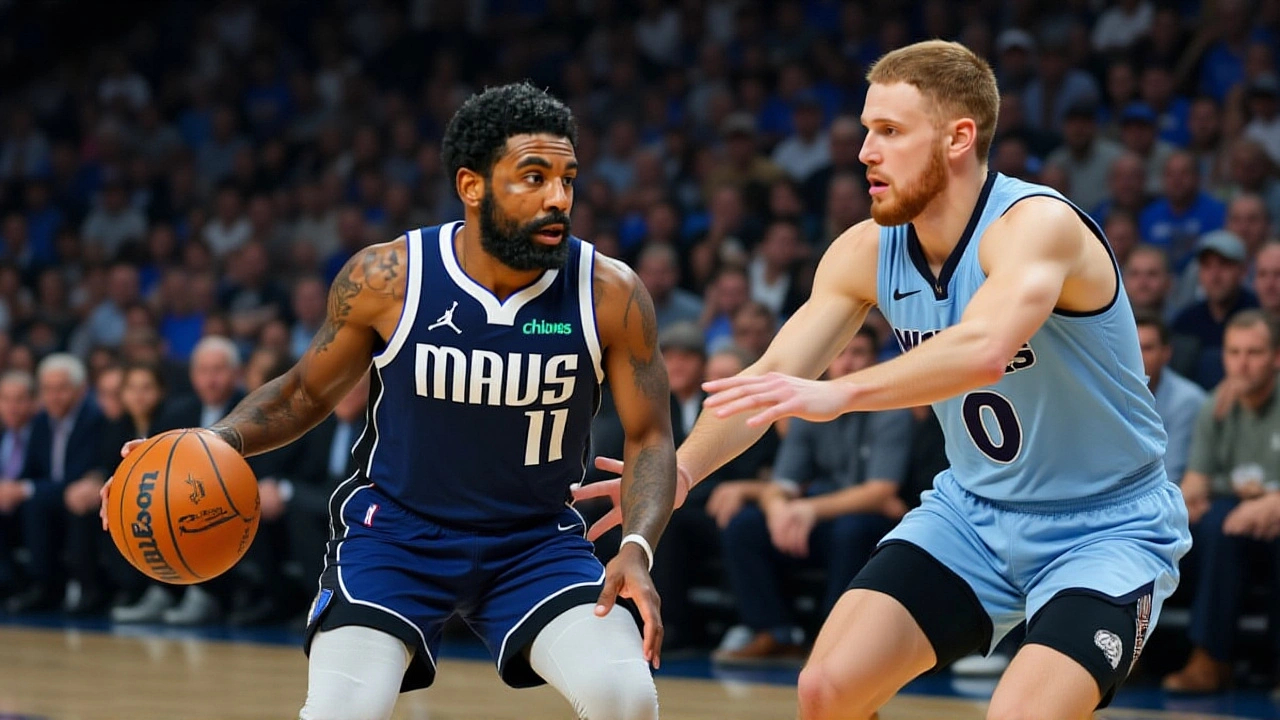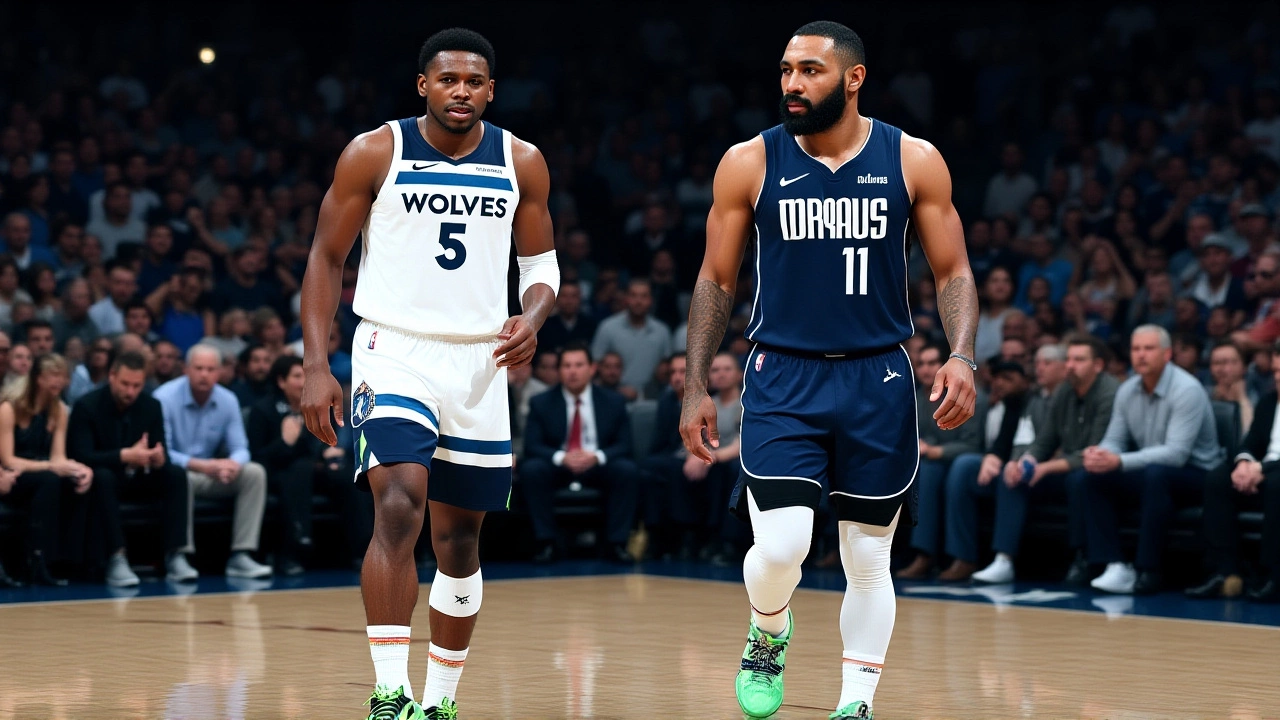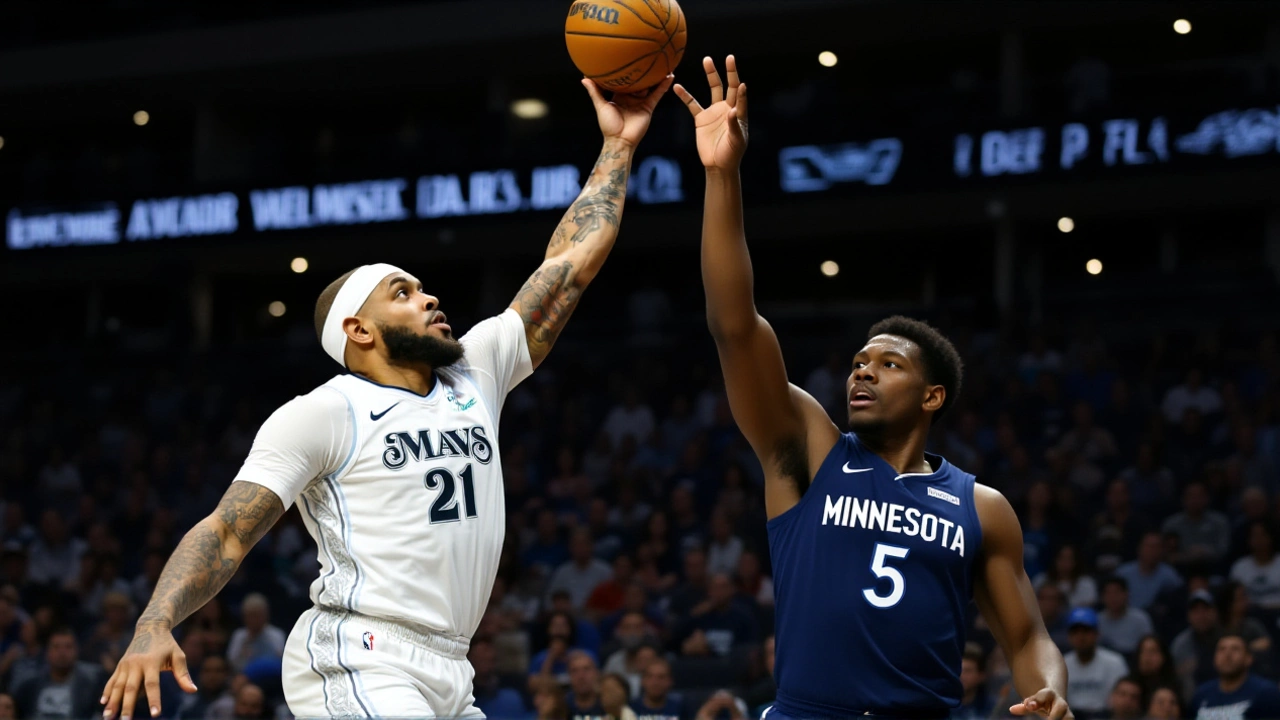The Minnesota Timberwolves didn’t just beat the Dallas Mavericks — they dismantled them. On November 18, 2025, at Target Center in Minneapolis, the Timberwolves rolled to a 120-96 victory, turning what was expected to be a tight contest into a statement win. The game, tipped off at 1:00:00 AM UTC, saw Naz Reid erupt for a season-high 22 points, including 19 in the first half, and capped it with a dagger three at the end of the third quarter that made it 95-63. Six Timberwolves reached double figures. The Mavericks? They were missing four starters. And it showed — badly.
Reid’s Breakout Night and Minnesota’s Balanced Attack
Naz Reid didn’t just play well — he dominated. The 26-year-old center came out like a man possessed, scoring 10 points in the first quarter alone. By halftime, he had 19. His rhythm was surgical: mid-range jumpers, putbacks off misses, and a late third-quarter three that sent the Target Center crowd into a frenzy. But this wasn’t just a one-man show. Jaden McDaniels and Rudy Gobert each added 15 points. McDaniels, in particular, caught fire in the third, hitting three straight threes in under 90 seconds to push the lead to 30. Even Anthony Edwards, who shot just 5-for-14 from the field, contributed 13 points and kept the defense honest. The Timberwolves’ offense? Fluid. Unselfish. They had 28 assists on 45 field goals. No one player carried them — the whole team did.
Dallas’s Injury Crisis Turns Into a Disaster
The Mavericks entered this game already bruised. Daniel Gafford (ankle), Dereck Lively II (knee), Anthony Davis, and Kyrie Irving were all sidelined — four key rotation players, including two starting frontcourt pieces and their most dynamic playmaker. What followed was a textbook example of how a depleted roster collapses under pressure. Dallas shot a miserable 30% (9-for-30) from deep. Their best scorers, Cooper Flagg and Brandon Williams, combined for 30 points — respectable, but nowhere near enough. The defense? Nonexistent. Minnesota scored 37 points in the third quarter alone. And when the Timberwolves’ starters sat, the bench — led by Reid — kept the pressure on. The Mavericks’ streak of covering +14.5 point spreads on the road? Gone. They lost by 24.

What the Numbers Really Say
Before the game, analysts at Scores24.live predicted an under 232.5 total points, citing Minnesota’s recent trend of slow starts against Dallas. They also noted the Timberwolves had scored under 32.5 in the first quarter in six of their last seven meetings with the Mavericks. The actual first quarter? Minnesota dropped 34. The final score? 216 total points — 16.5 under the prediction. This wasn’t a fluke. It was a systemic failure on Dallas’s part. Their last five games had all been over 109 points, but without Irving and Gafford, their spacing collapsed. The Timberwolves, meanwhile, had won five of their last six — a turnaround after a 112-123 loss to Denver where they faded in the final 12 minutes. This game? No fade. No mercy.
What’s Next for Both Teams
Minnesota (now 5-1 in their last six) heads into Wednesday, November 20, 2025, with a home game against the Washington Wizards at Target Center. They’re playing with confidence, balance, and defensive intensity — a rare combo in today’s NBA. Chris Finch’s squad is no longer just a playoff hopeful; they’re looking like a legitimate Western Conference contender. Meanwhile, Dallas (2-3 in their last five) faces the New York Knicks at home, same night. But with Irving and Davis still out, and Lively and Gafford’s returns uncertain, their path back to relevance looks steep. Their offense has been inconsistent without their stars, and their depth is thinning. The Mavericks aren’t just losing games — they’re losing momentum.

Historical Context: A Franchise in Transition
Since their first meeting in 1981, the Timberwolves and Mavericks have clashed 54 times. Dallas has held a slight edge with 30 wins — but 24 of those came on their home floor. Minnesota’s recent dominance at Target Center? That’s new. In the last three matchups in Minneapolis, the Timberwolves have won by an average of 18 points. This wasn’t just a win — it was a continuation of a trend. The Timberwolves, once a franchise known for rebuilding and heartbreak, are now playing with poise. Gobert anchors the paint. Edwards is the spark. Reid is the X-factor. McDaniels? The quiet assassin. They’re no longer just a team with potential. They’re a team that’s arrived.
Frequently Asked Questions
How did Naz Reid’s performance compare to his previous seasons?
Naz Reid’s 22-point outing was his highest since joining the Timberwolves in 2021, surpassing his previous season-high of 20 points set in March 2024. He’s averaged 11.8 points per game this season — meaning this game was nearly double his average. His efficiency (9-for-13 FG, 1-for-2 3PT) also marked his best shooting night of the year, showing he’s evolving into a reliable offensive weapon off the bench.
Why did the Mavericks’ three-point shooting collapse?
Without Kyrie Irving and Anthony Davis, Dallas lost its primary playmakers who create open looks for shooters. The remaining guards — Flagg and Williams — were forced into isolation plays, leading to contested, rushed threes. Their 30% accuracy (9-for-30) was their worst of the season and the lowest by any team in the NBA since November 5, 2025. The Timberwolves’ defensive rotations, led by Gobert and McDaniels, effectively clogged driving lanes and forced Dallas into low-percentage shots.
How has Minnesota’s recent form changed their playoff outlook?
Before this six-game stretch, Minnesota was hovering around 8th in the West, fighting for a play-in spot. Now, with five wins in six games, they’ve surged into the top six, just 1.5 games behind the Sacramento Kings. Their defensive rating has improved to 108.3 — the 4th best in the league over the last 10 games. If they maintain this pace, they’re no longer a longshot — they’re a potential second-round threat.
What’s the impact of missing four key players for Dallas?
Losing Gafford and Lively II means Dallas lost their two best rim protectors — their defensive rating jumped from 111.2 to 119.7 during this stretch. Without Irving, their half-court offense stalled. Their offensive rating dropped to 104.1 — below league average. The team’s win probability in games with four or more starters out is now just 18% this season. This loss isn’t just about one game — it’s a warning sign for their playoff hopes.
Is Target Center becoming a fortress for the Timberwolves?
Absolutely. Since the start of November, Minnesota is 6-1 at Target Center, outscoring opponents by 14.3 points per game. Their home crowd, once lethargic, is now electric — averaging 19,800 fans per game, up 12% from last season. The arena’s acoustics, combined with Gobert’s rim protection and Edwards’ highlight dunks, have turned it into one of the NBA’s most intimidating home courts. Opponents are now 0-4 in Minneapolis this month when trailing after three quarters.
What does this game mean for the NBA’s Western Conference race?
This result reshuffled the West’s middle tier. The Timberwolves are now tied with the Phoenix Suns for the 5th seed, while the Mavericks drop to 10th — just one game ahead of the 12th-place Clippers. With only six games separating 1st from 10th, every win matters. Minnesota’s depth and defensive cohesion make them a dangerous dark horse. Dallas, meanwhile, risks falling out of playoff contention if their injuries persist. This game wasn’t just a win — it was a seismic shift.
